Have you ever looked at the moon and wished you could see its reflection on Earth? If you have, then Chandra tal Lake is waiting for you. This breathtaking body of water, situated amidst the remote cold desert areas of the Spiti Valley in Himachal Pradesh, is truly a sight to behold. For many travellers, seeing the turquoise waters of this lake is the main goal of their entire Spiti Valley trip. Before embarking, you might need a complete Chandra tal travel guide, ensuring you know exactly how to reach this jewel, the best time to visit Chandra tal, and how to stay safe in this remote location. We got you covered!
What to Expect: The lake’s name itself, Chandra (Moon) and Tal (Lake), tells you everything you need to know about its beautiful crescent shape. It looks exactly like a sliver of the moon resting on the high plateau. Visiting this lake is not just a trip; it is an adventure that tests your spirit and rewards you with unmatched natural beauty. Brace yourself to be awestruck when you glance at the snow clad mountains, blue sky and cottony clouds, in reality as well as in Chandra tal’s reflection!
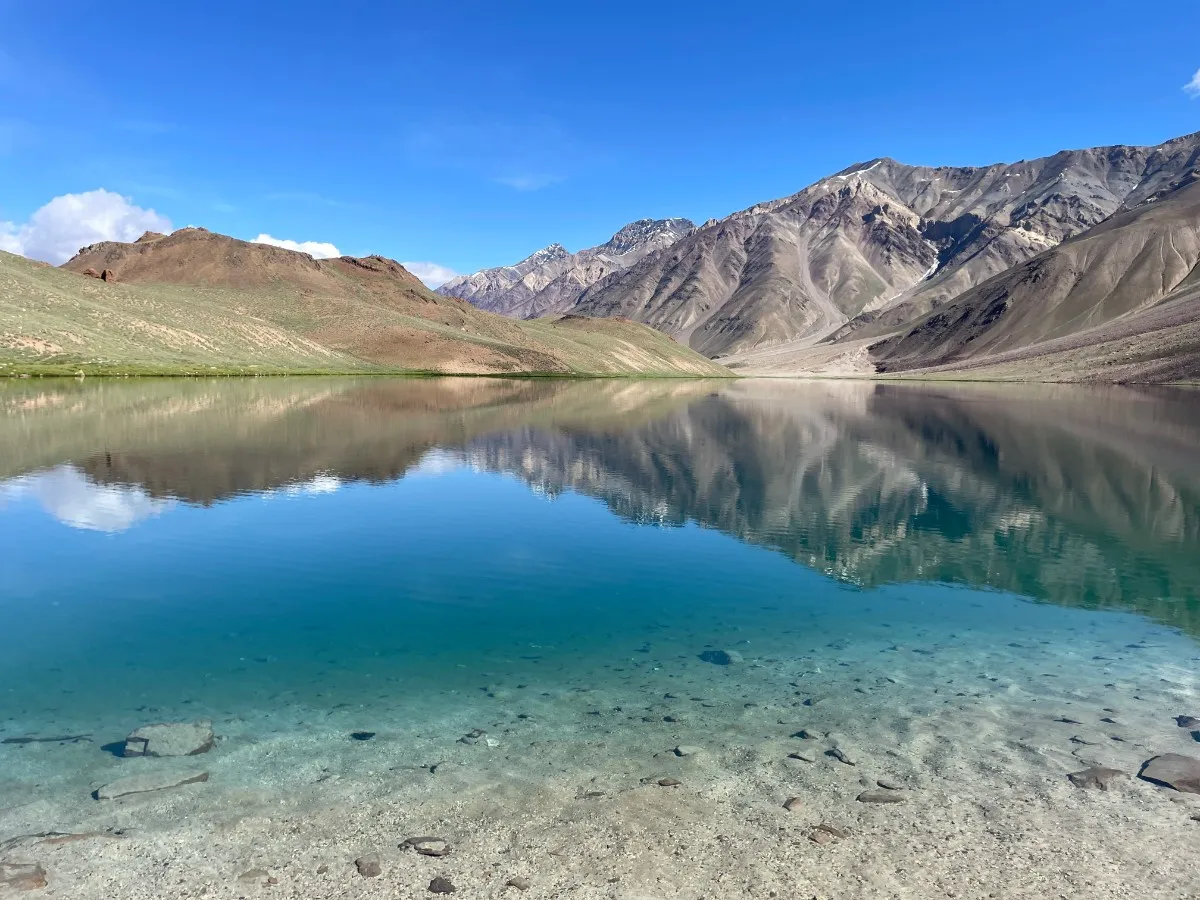
Table of Contents
The Geography, History, and Mystique of Chandratal Lake
Chandra tal Lake sits at a massive elevation of about 4,300 meters, or 14,100 feet, above sea level is located in Chandra Valley of Lahul & Spiti. This high altitude location is a key reason for its unspoiled beauty and its challenging accessibility. It is a source of the Chandra River, which later merges to form the Chenab River. The most striking thing about the lake is the vivid, ever-changing colour of its water. Throughout the day, as the sun moves across the sky, the lake transforms. You might see a deep blue in the morning, shifting to a clear turquoise or emerald green by midday. This natural spectacle is one of the main reasons why people travel such long distances to visit this location. The high mountains surrounding the lake, primarily the Samudra Tapu glacier, provide a stunning backdrop, making it a photographer’s dream spot.
Historical Significance of Chandra tal Lake
The lake has deep ties to local and ancient Indian history, which makes it even more special for the Indian audience. According to local folklore, Chandratal Lake is the place from which the Pandava brother Yudhishthira was taken to heaven in his mortal body by Lord Indra, the King of the Gods. This tale is a common feature in many travel documentaries and vlogs about the region, adding a layer of spiritual significance to the location. The lake is considered sacred by the people of Lahaul and Spiti.
The barren, cold desert landscape around the lake gives it an otherworldly look. It is a place of deep silence and peace, far removed from the noise of city life. Being a protected Ramsar wetland site, it is a crucial ecological zone for migratory birds, especially during the short summer season. The feeling of reaching the Moon Lake Spiti after a difficult journey is a feeling of immense satisfaction and spiritual connection.
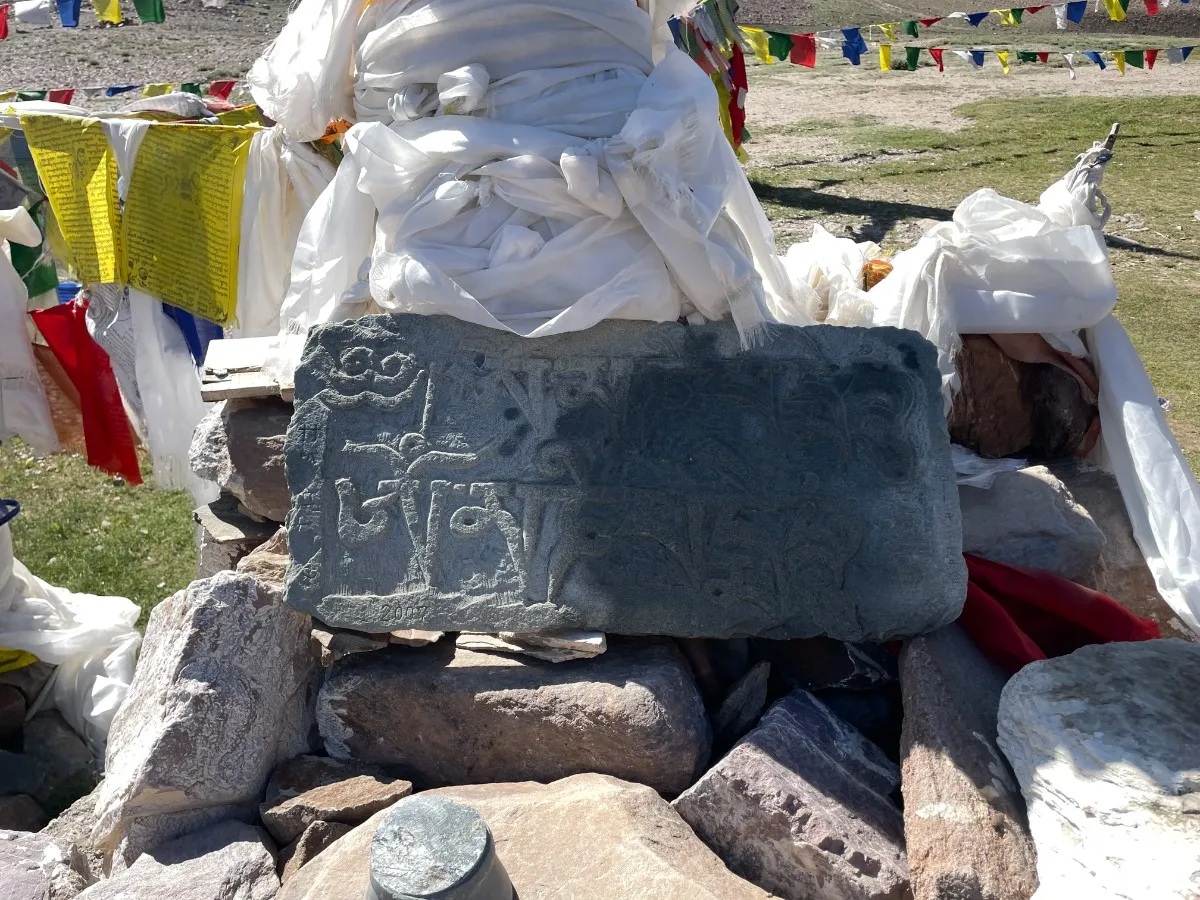
Planning Your Chandra tal Trip: When and How to Visit
Knowing the best time to visit Chandra taal is critical because the area is cut off from the world for more than half the year due to heavy snowfall.
Best Time to Visit Chandra tal
The window for visiting Chandra tal Lake is quite short, usually opening from June to September or early October.
- June: The roads, especially the Kunzum Pass, are usually cleared by mid-June. The weather is cold but pleasant during the day. This is the start of the season.
- July and August: This is the peak season. Even though it is monsoon season in the rest of India, the Spiti region, being a high-altitude cold desert, receives very little rainfall. The weather is stable, and the lake is at its most accessible.
- September and Early October: This is arguably the best time for clear skies and stunning views. The weather starts getting very cold, especially at night, but the air is crisp, and the visibility is excellent. The tourist rush is also slightly less.
Seasons to Avoid: The lake is completely inaccessible from late October to May. The Kunzum Pass, which is the gateway to the lake, receives massive snowfall and is closed to all traffic. Attempting to visit during these months is dangerous and impossible for tourists.

How to Reach Chandra tal
Reaching the lake requires careful planning, as the roads are challenging and highly dependent on weather conditions. There are two primary routes to access the Moon Lake Spiti:
Route 1: Via Manali (The Quick Route) This route is generally preferred by those starting from North India, like Delhi or Chandigarh.
- Manali to Batal: You travel through the famous Atal Tunnel (or the older Rohtang Pass, though the tunnel makes the journey much faster now) and then onwards to Gramphoo and Batal. This part of the journey is notorious for some of the worst roads in India. You will encounter the infamous Pagal Nala (Crazy Stream) where water flows directly over the road.
- Batal is the key checkpoint. From Batal, you take a narrow, unpaved road towards the lake. The total distance from Manali to Batal is around 100-110 km, but it can take 6-8 hours due to the condition of the road.
Route 2: Via Shimla and Kaza (The Safer Route for Acclimatization) This is often considered the better way to travel because it allows your body to acclimatize slowly to the high altitude.
- Shimla to Kaza: This route takes you through Kinnaur (Chitkul, Kalpa) and then into Spiti Valley, reaching Kaza (the main town of Spiti). The journey is long but scenic, and the road quality is generally better than the Manali-Batal stretch.
- Kaza to Chandra Tal Distance: The distance from Kaza to the Chandra tal Lake road junction (near Kunzum Pass) is about 90 to 100 km. You travel over the Kunzum Pass (4,551 m), which offers incredible views. After the pass, you descend towards the lake junction.
Important Vehicle Note: No matter which way you choose, a high-clearance vehicle (SUV or a sturdy 4×4) is necessary. Small cars are not suitable for the terrain between Gramphoo and Batal, or the final stretch to the lake. The road conditions stress the importance of using experienced local drivers.
The Final Stretch: Trekking and Road Details
The last part of the journey is what defines the adventure of reaching Chandra tal Lake. This section serves as a practical Chandra tal travel guide for the final steps.
The Kunzum Pass Connection
If you are coming from Kaza, you must first cross Kunzum Pass. This pass is a high-altitude mountain pass that connects the Spiti Valley and the Lahaul Valley. There is a small temple dedicated to Goddess Kunzum, where travellers often stop to seek blessings for a safe journey. Once you cross the pass, you start descending towards the lake access road.
The Drive to the Parking Spot
From the Batal side, or after descending Kunzum Pass, there is a rough, dusty, and very narrow road that leads for about 14 kilometres until the designated vehicle parking area. This section is challenging and often involves driving through small streams or over large rocks. This road is usually opened up by locals or PWD once the snow melts. In some very busy seasons, vehicles might be stopped a few kilometres before the parking area due to local regulations or safety concerns.
The Chandra tal Trek
Vehicles are not allowed right up to the lake’s edge to preserve its delicate ecosystem. From the official parking lot, you must undertake a short, beautiful Chandra tal trek.

- Distance: The walk is approximately 1.5 to 2 kilometres one way.
- Time: It takes about 30 to 45 minutes, depending on your fitness level and how well you are acclimatized.
- Path: The path is well-marked and relatively flat, but remember you are walking at over 14,000 feet. The air is thin, so you must walk slowly and steadily. This short walk is the final step to seeing the mesmerizing lake. Many travellers prefer to undertake the full Chandra tal trek from Batal, which is about 14 km. This walk is longer and more demanding but offers exceptional views of the high desert landscape. If you choose this option, plan for a full day of trekking.
The Batal to Chandra tal Road Challenge
The stretch from Batal to the lake is famous in many travel vlogs for its difficulty. The road is essentially a dirt track cut into the mountain side, often just wide enough for one vehicle. It is common to see huge boulders and deep cuts in the road. The drivers are experts at navigating this terrain, but for those driving themselves, it requires maximum focus. River crossings are common, especially in the early season. This is why when planning how to reach Chandratal, it is important to factor in time for unexpected delays. The rough journey ensures that only the truly dedicated travellers reach the lake.
Accommodation, Stay, and Essential Gear
Due to its high altitude and remote location, the stay experience at Chandra tal Lake is basic but unforgettable.
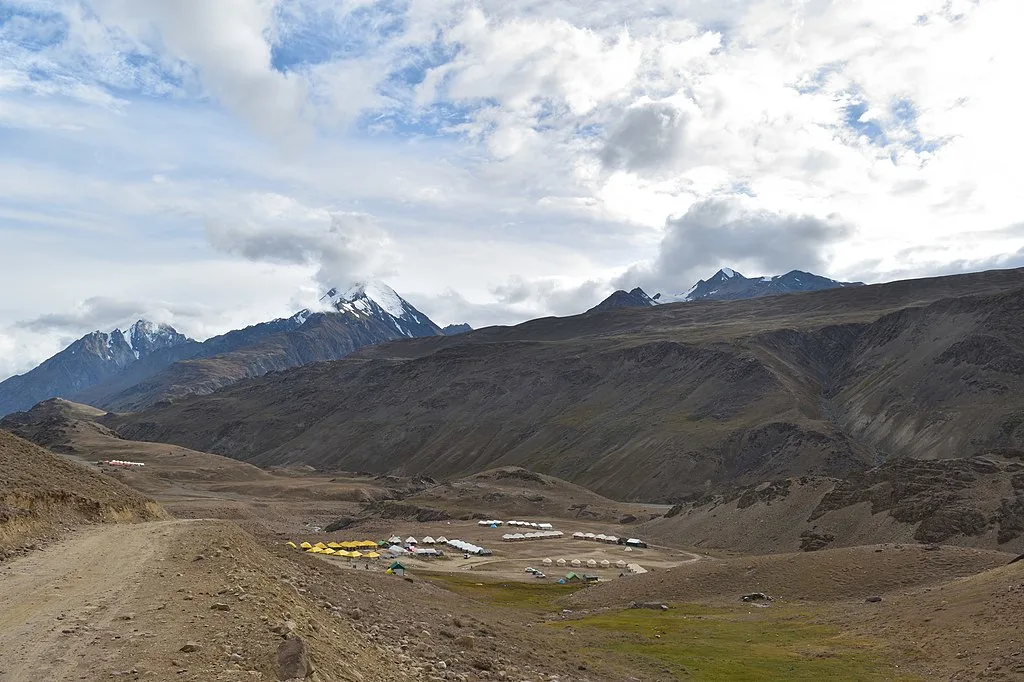
Camping in Chandra tal
You are strictly prohibited from camping in Chandra tal right by the lake. This is a rule implemented by the local authorities to protect the fragile environment and water quality.
- Designated Campsites: The official campsites are located about 2 to 3 kilometres before the lake. These sites are run by local villagers and travel operators.
- Accommodation Type: The standard accommodation here is usually a ‘Swiss Tent’ or a simple dome tent. Swiss tents are large, have proper beds, and often come with an attached basic toilet facility (dry pit or portable).
- Food: All meals (dinner and breakfast) are provided by the camps and are typically simple, hot North Indian meals (Dal, Rice, Roti, Sabzi). The taste of hot food at this altitude is unmatched.
- Booking: It is highly recommended to book your Camping in Chandra tal stay in advance, especially during the peak season of July and August. Walk-in bookings can be difficult to find.
What to Expect at Night
The temperature drops drastically after sunset. Even in July, the temperature can drop close to zero degrees Celsius, and often below freezing in September.
- Warmth is Key: The camp operators provide heavy blankets and sleeping bags, but you must bring your own thermals, gloves, warm caps, and a good jacket.
- Power: Electricity is usually non-existent or available only for a few hours via a generator. Be sure to carry power banks for your phones and cameras. The silence and the sheer number of stars visible in the sky at night make up for the lack of modern amenities. The view of the Milky Way galaxy from here is phenomenal, something often highlighted in high-altitude travel vlogs.
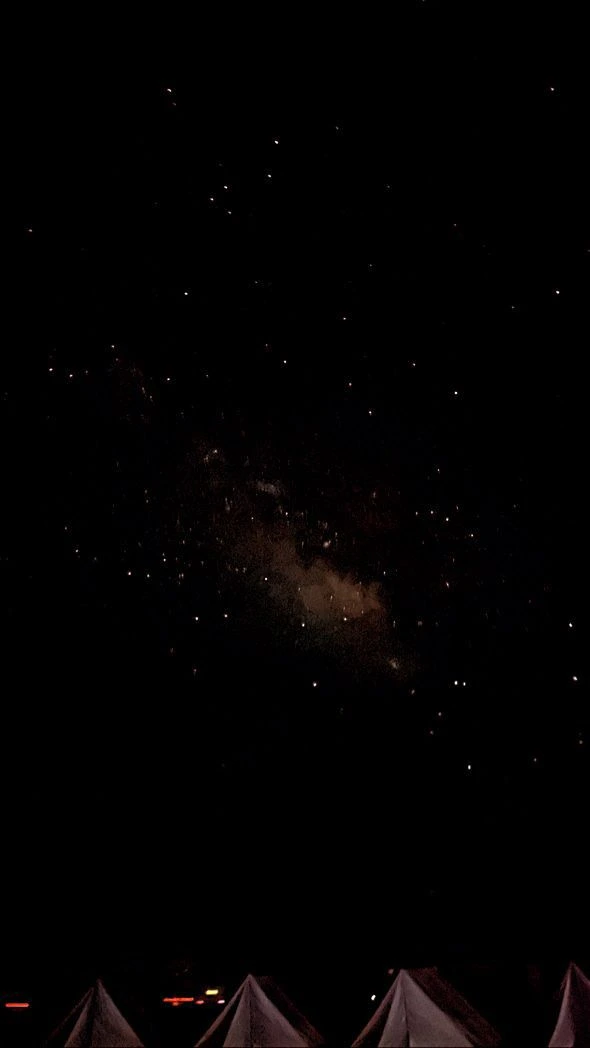
Essentials to Carry
A trip to this high altitude lake in India requires specific preparation:
- Warm Clothing: Layers of woollens, thermals, waterproof jackets, and sturdy shoes.
- Medicines: Carry basic first aid, pain relievers, and especially medicines for altitude sickness (Diamox, if prescribed by your doctor).
- Hydration: Always carry a water bottle. Dehydration is a major cause of altitude sickness.
- Sun Protection: The UV rays are extremely strong at this elevation. Carry high-SPF sunscreen, good sunglasses, and a wide-brimmed hat.
- Cash: There are no ATMs after Kaza or Manali, so carry enough cash for your entire stay.
Health and Safety: Dealing with High Altitude
A trip to the Moon Lake Spiti can be dangerous if you do not respect the altitude. Acute Mountain Sickness (AMS), or altitude sickness, is a real risk.
Acclimatization is Non-Negotiable
This is the most crucial piece of advice in any Chandra tal travel guide. Acclimatization is the process of allowing your body to adjust to the lower oxygen levels.
- Manali Route: If you are coming via Manali, you should spend a night in Manali, or preferably, in Kaza, before going to the lake.
- Kaza Route: If you are coming from Shimla, spending two nights in Kaza or a nearby village like Kibber or Langza is ideal. Kaza to Chandra tal distance is about 100 km, which can be done in a few hours, but driving directly from sea level to Chandratal in one day is extremely dangerous.
- Go Slow: The most important rule is to ‘climb high, sleep low’. Do not exert yourself on the first day at high altitude. Walk slowly and breathe deeply.
Symptoms of AMS
Be aware of the symptoms:
- Headache (the most common sign).
- Nausea or vomiting.
- Dizziness or lightheadedness.
- Fatigue or difficulty sleeping. If symptoms worsen, the only cure is to immediately descend to a lower altitude (Batal or Kaza). Do not take the risk lightly.
Road Safety
As mentioned, the roads, especially the Batal to Chandra tal stretch, are perilous.
- Drive During the Day: Travel only during daylight hours (8 AM to 4 PM). The road becomes too dangerous in the dark.
- Check Conditions: Always check the road condition at Batal or Kaza before starting the final leg of the journey. Local dhabas or police posts can give you the most accurate update.
- Tackling a Nala: If you encounter a nala (stream) that you have to cross, wait for a larger vehicle to pass first to understand the best route. If the water flow is too strong, it is better to wait for a while for the flow to lessen.
Connecting the Dots: Nearby Attractions
While the lake is the star, your Spiti Valley trip offers many other stunning sights that are easy to combine with your visit to the Chandra tal Lake.
- Kunzum Pass: This pass is unavoidable on the Kaza side and is a must-stop for the views and the temple of Goddess Kunzum.
- Kaza: The capital and main town of Spiti Valley. It is a good place to refuel, get supplies, and acclimatize.
- Ki Monastery (Key Gompa): Located near Kaza, this is one of the most famous and largest monasteries in Spiti. Its beautiful location and architecture are a treat to see.
- Hikkim, Komic, and Langza: These are the world’s highest villages with motorable roads and are a short detour from Kaza. Langza is famous for its Buddha statue overlooking the valley.
- Pin Valley National Park: A detour from Kaza into Pin Valley offers a completely different landscape and the chance to spot Himalayan wildlife.
Visiting these places adds context to your journey and makes your complete Chandra tal travel guide a true experience of the high Himalayas. Understanding the culture and the harsh environment of Spiti makes the beauty of the lake even more impactful. As far as the surroundings are concerned, you are sure to witness wallpaper-worthy views in reality.
Final Thoughts: The Magic of the Moon Lake
Hope this comprehensive guide to Chandratal Lake, also known as the Moon Lake of the Himalayas helped you. We covered almost everything you need to plan your unforgettable Spiti Valley trip to this stunning high altitude lake in India. The journey to Chandra tal Lake is undoubtedly challenging. It involves long hours on rough roads, unpredictable weather, and the constant awareness of the altitude. But the moment you complete the final Chandra tal trek and the crescent-shaped blue waters of the Moon Lake appear before you, all the difficulties vanish.
This high altitude lake in India remains one of the most treasured spots in the country for a reason. When planning your next great adventure, use this Chandra tal travel guide and confidently mark your calendar for the unforgettable journey to the heart of the Spiti Valley. Make sure your Spiti Valley trip includes this breathtaking lake.
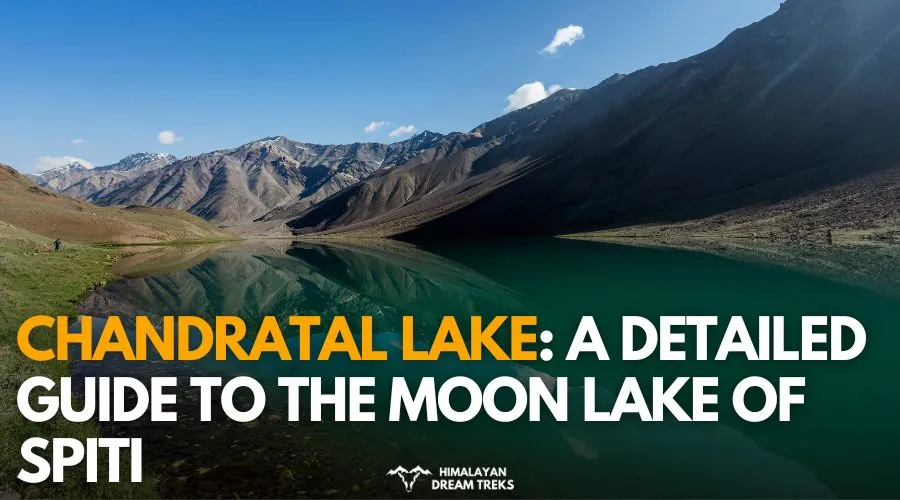
Leave a Comment